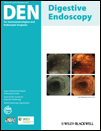Prospective evaluation of the optimal number of 25-gauge needle passes for endoscopic ultrasound-guided fine-needle aspiration biopsy of solid pancreatic lesions in the absence of an onsite cytopathologist
Conflict of interest disclosure: Dr Bhutani has received accessories for research from Cook Inc. not related to this project. The other authors disclose no financial relationship relevant to this publication.
Abstract
Introduction: A prior study with 22-gauge needles recommended more than seven needle passes for endoscopic ultrasound-guided fine-needle aspiration biopsy (EUS-FNA) of solid pancreatic lesions (SPL) without onsite cytopathology for optimal acquisition of cytopathological diagnosis. The feasibility of this recommendation should be re-evaluated considering the later development and popularity of 25-gauge EUS-FNA needles. We aimed to determine the optimal number of needle passes for cytopathological specimen acquisition with 25-gauge needles for EUS-FNA of SPL.
Methods: A preliminary prospective study of 22 patients with an onsite cytopathology technician showed a sensitivity of 93.3% and a specificity of 100% with four needle passes that was not statistically different from five needle passes. Based on our preliminary study, we fixed the number of needle passes to four (Group A). As a control group, we carried out sampling in consecutive patients using 25-gauge needles with an onsite cytopathologist (Group B). Sampling rate, diagnostic value and complications were evaluated.
Results: We enrolled 20 patients in each group. Sampling rate was higher in Group B (20/20, 100%) than in Group A (19/20, 95%), but there was no statistical difference between them (P-value = 0.31). In Group A, sensitivity, specificity and accuracy were 100% among 19. In Group B, sensitivity was 94.1%, specificity 100%, accuracy 95%. There were also no statistical differences between the groups. No complications were seen.
Conclusion: Our study suggests that four needle passes using a 25-gauge needle may be sufficient for EUS-FNA of SPL where onsite cytology is not available.




